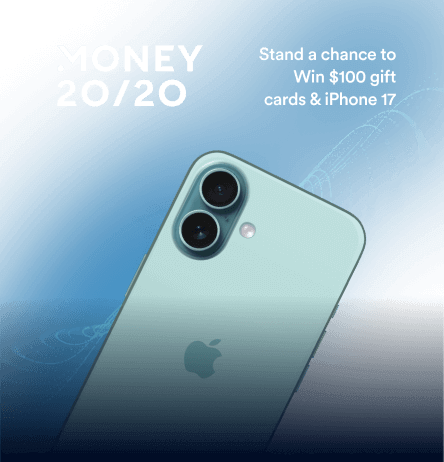There are huge changes looming over the horizon for the mobile industry. As mobile marketers, it’s crucial to track these developments when building engagement strategies.
Remember that mobile is woven into the fabric of our daily lives. An average adult spends 3.1 hours a day consuming digital media on mobile (or about 69% of total media time). If we want our apps to take a slice out of those 3.1 hours, we need to understand the factors that will affect mobile usage.
Over the next two years, these 15 mobile marketing trends will affect mobile usage in the B2B, mobile gaming, and enterprise spaces. Bookmark this list and take note of the recommendations under each group. Knowing these trends will be a benefit for your brand.
6 B2B Mobile Marketing Trends

B2B marketers face rapid changes in customer tastes and in marketing technology. But which changes are passing fads and which are serious trends we must watch?
Pay attention to these six trends as they will play major roles in mobile marketing in the next two years.
The Resurrection of Augmented Reality
Every year we hear, “This is the year Augmented Reality (AR) takes the world by storm!” While AR might never regain the viral success of Pokemon Go in 2016, it is still growing. These days though, brands use it as an effective tool to motivate conversion.
Look at how industries outside of fashion and retail use AR. You’ll find it in apps for furniture (“What would my living room look like with that sofa?”). AR is present in geolocation/map apps (“What are the good restaurants on this block?”). And of course, AR is in social media (Snapchat’s ever-famous lenses).001
Brands are already using AI to choose the copy that best resonates with users. You will now see AI optimizing images and A/B testing variations of layouts and graphics.
Companies are now using AI in the execution of campaigns. For example: automating the process of finding effective send times and send frequency. Furthermore, AI is learning from user behavior, and matching them with a promotion. Sometimes it is a discounted price, other times, a specific dollar amount off, or free shipping. 002

Push Notification Secrets from Today’s Top Mobile Apps
Increased Personalization via Marketing Automation
You already get emails with your first name in the subject line. There’ll be much more of that in the coming years. Personalization is in every year’s mobile marketing trends precisely because it works.
Marketing automation tools already slice and dice any user base into granular segments. They do it based on demographics, psychographics, stage, and user behavior in your app. Sending these segments personalized messages is easy work with triggered and scheduled campaigns.
Omnichannel Everything
Other B2B mobile marketing trends may fade, but omnichannel marketing continues to expand. Omnichannel marketing, is preparing for a customer to convert on any of your channels.
Online sales grow at almost 10% every year.003 But many people still prefer brick-and-mortar stores. 70% of millennial consumers in the US prefer to shop in physical stores.004
And mobile marketers should be able to convert users on the channels (or devices) they use. That can be your app, website, or in your physical store.
Faster Ways to Pay
Mobile commerce isn’t going anywhere. In fact, mobile devices account for 19% of all US retail e-commerce sales. By the end of 2018, it’s estimated to reach as high as 27%.005
Expect to see more mobile apps install quicker, more convenient ways to get users to check out and pay.
The role model here continues to be Amazon, who perfected the art of 1-Click ordering years ago. By reducing the hoops in the transaction process, they increased conversion rates.
More Influencer Marketing by B2B Brands
Watch as more B2B brands and apps embrace the idea of influencer marketing and shoot for engagement via influencers’ individual platforms. It’s not just a B2C thing anymore.
Brands realize it’s easier to market their products to an influencer’s extensive network. Influencer marketing can be as simple or as complex as you want it to be. A product endorsement or guesting on a podcast/live broadcast is one way. Or you could create co-branded content that both you and the influencer promote.
It’s a win-win with the right partnership. The payoff, at the very least, is brand awareness within your target audience.
Recommendations for Your B2B Mobile App
1. See if your app has a use case for AR.
Augmented Reality has outgrown its perception as “that fun thing you do with goggles.” Instead, AR is now much more concerned with influencing purchase decisions.
Will AR enrich your customers’ experience? Don’t just add it as a gimmick, though. See if there is a use for it that your users would find value in, and that would lead them closer to a conversion.
2. Use AI in your campaigns.
You should already be using marketing automation tools with built-in Artificial Intelligence. If not, then you may be wasting time and resources. Find better tools so you can optimize your efforts at engaging your user base.
3. Personalize your communications.
Segment your users. Find a platform that segments users automatically based on a user’s in-app activity. This way, you can personalize every message to the user’s context and increase engagement.
4. Invest in an omnichannel marketing strategy.
You have to be ready to give users a consistent experience no matter which channel they choose to convert on. You have to invest time and resources into your omnichannel strategy.
Understand how your customers learn about, buy, and use your product or service. Then remove as many barriers as possible from their customer journey. If you need great examples of omnichannel marketing, we’ve got you covered.
5. Streamline your app’s checkout and payment processes.
Over in Quora, some estimate that if your checkout process becomes one click, you could improve conversion rates anywhere from 15% to 100%.006
Take those estimates with a grain of salt, of course. Any streamlining of the payment process benefits your brand and reduces cart abandonment. After all, no one wants to lose a customer who has already shown willingness to take out their wallet.
6. Seriously consider influencer marketing.
You might be surprised how many B2B influencers there are in your space. Seek them out and see if it makes sense to partner with them. The potential win is huge if done correctly and could bring a massive influx of new users.
4 Enterprise Mobility Market Trends

Enterprise mobility is all about the people, processes, and technology used to manage a business’ mobile devices, wireless networks, and mobile computing services. 71% of enterprise businesses believe mobility is a top priority, and the market is predicted to generate revenue of $240 billion in 2020.
Here are five enterprise mobility market trends that will play a major role in large businesses for the next two years.
More BYOD Than Ever
More than half of US and European companies are developing BYOD (Bring Your Own Device) programs. The sheer demand from workers has turned this from a fashionable trend into a reality.
Many workers use personal mobile devices for accomplishing their daily work. Thus businesses face the challenges of: ensuring these devices have enterprise-grade security that won’t compromise customer data, having an infrastructure in place that can integrate multiple devices, and of course, manpower.
But the upside is productivity. Workers know how to use their own devices. And, for the most part, may need less technical support than with company-owned devices.
A Need for Cross-Platform Apps
Because workers use mobile devices to do their work, there is a growing need for cross- and multi-platform apps. These should allow workers to collaborate no matter what device they use. After all, you can’t have true BYOD if you use a work app that is, say, only for Mac and iOS. Single platform apps no longer cut it in the enterprise.
Demand for Transparency & Data Security
GDPR and the Facebook/Cambridge Analytica fiasco will mean a stronger demand for transparency in data practices. Already, laws are being proposed in the US forcing social media companies to disclose who pays for political ads on their platforms. How this will affect business marketing in general is still unclear, but consumers aren’t sitting this one out.
For one thing, consumers are now looking more closely at what brands do with their data. They’re reading terms of service. Expect companies to come out with clearer versions (i.e. layman speak) of their terms.
The Move to Hybrid / Multi-Cloud
The average enterprise already uses upwards of 1,400 cloud services for work. The challenge is to develop a strategy that makes the best use of the cloud services already at play.
There are many definitions of “hybrid” and “multi cloud,” some contradictory. The main idea is that companies use a mix of of private and public cloud services.
The advantages are many. They get to offset device storage limitations, save on computing power, save money, and even increase security. More enterprise businesses will move toward consolidating cloud services under a cohesive strategy.
Recommendations for Your Enterprise App
Based on those enterprise mobility market trends, we suggest you:
1. Look into creating a cross-platform app.
If your app is a potential enterprise tool, you have to at least consider building it to be cross-platform. With the growth of BYOD, workers will use their personal mobile devices to access your app. The more you can support, the better.
There are several deciding factors to consider:
- Are you a large company with an enormous user base? Supporting even an unpopular platform could be a big win for you.
- Are you aiming to cut down your time-to-market? Then making your app cross-platform won’t be as urgent as getting the Minimum Viable Product out.
2. Clarify what data your app collects, and make your TOS easy to read.
Yes, you’re done with your GDPR efforts. It’s still a good idea to revisit your terms of service. Ensure they answer customer questions about data security such as:
- What your brand does with user data
- Whether your brand sells user data to third-party services
- Where your brand stores user data
- Whether users can retrieve or delete their data easily from your app
3. Consider moving your enterprise app to a hybrid or multi-cloud.
The benefits of moving to a hybrid or multi-cloud system are many. You gain turnkey ease of management. It offers your app stability and scalability as your brand grows. Plus, you control which parts of your system access the public and private cloud services.
5 Mobile Gaming Market Trends

Mobile gaming is a huge market. It generated $40.6 billion in revenues worldwide in 2017 alone. And it now holds its own in comparison to the larger gaming industry.
Expect the following five mobile gaming market trends to be everywhere in the next two years.
Scale First, Monetize Later
Mobile game developers aim to scale their games first and monetize later. Their goal: build up a loyal following of DAUs and fans. Then introduce in-game elements that they can buy for real money (or cryptocurrency).
This is the user acquisition strategy used by games like PUBG (PlayerUnknown’s Battlegrounds) and FortNite. You’ll see more mobile games who will try to copy that concept.
Real-Time Analytics Leads to More Dynamic Content
Game developers can now track users across their devices and platforms in real time. This gives them a better understanding about why gamers behave in certain ways. Real-time analytics like these will help developers create content that gamers want.
Expect More Multiplayer Experiences
The multiplayer market is booming. A casual glance at the mobile games in app stores shows how effective multiplayer environments are at retaining users. While there may be limitations on older devices, expect more real-time player vs player experiences in mobile gaming as a whole.
Mobile Gaming Companies Capitalizing on Intellectual Property
You saw how Angry Birds hit it big as a mobile game, then sold merchandise across the globe. They even turned the game into an animated movie.
Expect mobile gaming companies to begin acting more like media publishers. They will be treating their unique intellectual properties as revenue-generating ventures. Companies will work at selling rights for their material to become multimedia franchises. Watch for a deluge of licensed books, comics, movies, TV series, and yes, even plush toys based on mobile games.
Cryptocurrency Tokens for Transferring In-Game Resources
Cryptocurrency is everywhere and being tested on new things all the time. One use case is tokens that give mobile gamers a way to transfer currency from one game to another.
How is this useful? Say a mobile gamer bought in-game resources in one app but lost interest in that app. The gamer can transfer that value over to another game using cryptocurrency tokens.
Recommendations for Your Gaming App
If you develop a mobile gaming app, then you’re already acquainted with these trends. But if not, then we have the following suggestions based on what’s happening in the mobile gaming space:
1. Build your tribe first.
Monetize slowly, or when your audience is in place. It’s good to have a plan for how you intend to convert your users, but if you’re just starting out, it’s important to scale first. If you are able to hook users — by convincing them of the benefits of your app and getting them to open it regularly — then conversion will be much easier.
2. Get yourself a real-time analytics tool.
You won’t understand what your users are doing in your app if you can’t measure their activity. That means metrics. Find a platform that gives you real-time insights. In fact, you’re actually a step in the right direction because you’re reading our blog… and we have an intelligent mobile marketing platform that does just that.
3. Give your app a true social aspect.
A multiplayer experience is a community engaged in doing something they enjoy together. Does your app have this?
Scoring leaderboards are boring. Every game has a chat function these days. And social sharing buttons are pretty much a given. Look for a deeper way to create social connections in your app. Find a way that users can interact with one another in real time.
What Mobile Marketing Trends Do You See in Your industry?
These mobile industry trends are our take on the major factors that will affect how you market your apps.
But you may have a different set of trends that are appearing within your industry or geography. If so, chime in below to tell us what you’re seeing and why it’s important to track these developments.

Push Notification Secrets from Today’s Top Mobile Apps
Shivkumar M 
Head Product Launches, Adoption, & Evangelism.Expert in cross channel marketing strategies & platforms.
Free Customer Engagement Guides
Join our newsletter for actionable tips and proven strategies to grow your business and engage your customers.














































